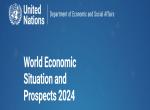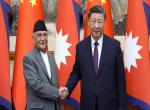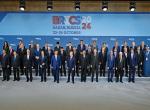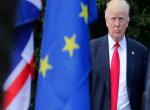Introduction
In late 2019, a notable increase in cases (a cluster) of atypical pneumonia occurred in Wuhan, China.[1] That prompted the World Health Organization (WHO) to activate its incident management support team on 1 January 2020 as part of its emergency response framework to oversee and track the spread of such pneumonia cases. By 30 January 2020, WHO officially recognized the outbreak of the novel coronavirus in China as a public health emergency of international concern, and due to its rapid spread, declared Coronavirus disease 2019 (COVID-19) a pandemic on 11 March 2020. COVID-19 is a novel disease caused by the newly identified virus, the Severe Acute Respiratory Syndrome Coronavirus 2 (SARS-CoV-2). It is considered “novel” because the virus and the disease were unknown and unprecedented.
Despite the occurrence of pandemics in the past, and despite warnings from experts to prepare for the next big one, the world was completely caught off guard by the COVID-19 pandemic. Every country in the world struggled to put in place a reasonable response action plan to combat the COVID-19 pandemic and develop models that are suited to their specific economic, healthcare, and scientific preparedness. Early predictions by various agencies and experts of disease infection and its severity for India were dire. One such expert observed in The New York Times:
“Our initial estimates showed that 300 million to 500 million Indians were likely to be infected with the coronavirus by the end of July. Most of the cases would be without symptoms or with mild infections, but about a tenth - 30 million to 50 million - would most likely be severe. Our model predicted that at the outbreak’s peak, even with conservative assumptions, there would be 10 million patients with severe Covid-19 disease in India, many of whom would need to be hospitalized.”[2]
India’s large population, high population density, diverse demographics, and perceived shortcomings in its healthcare system increased the exigency of the COVID-19 pandemic manifold. Nowhere else in the world did a government encounter such complexity and scale in responding to the pandemic. Testing, tracing, public health measures (mask-wearing and social distancing), medical care, and vaccine development, procurement and delivery required a formidable and demanding implementation mechanism. The response shown by India - under duress and in the face of critical commentaries and examination - has been an unprecedented and nebulously coordinated effort. One criticism of the Indian government’s strategy was that it did not listen to experts. But this criticism was contradicted by the Indian government’s prompt announcement of a nationwide lockdown on 24 March 2020. The announcement, based on expert predictions, was critical but controversial. However, it helped contain the spread of COVID-19 and that fact was duly acknowledged by even those who predicted a large outbreak in India in July 2020. [3]
India’s COVID-19 Response as a Model for Equitable Healthcare
The nationwide lockdown allowed India to marshal its resources and chart out an action plan. With similar lockdowns around the world subverting the supply chain, technological self-sufficiency was prioritized. Diagnostic kits, masks, digital vaccine delivery platforms, ventilators, and vaccines that were developed in India were made available not only to Indians but also to the world at low costs. India’s actions therefore have been exemplary and it serves as a model for equitable and affordable healthcare.
Lessons from India’s response such as effective public-private partnerships and efficient use of technology to maximally utilize public health system resources and networks will advance health equity and support better healthcare outcomes where they are needed the most around the world.
Masks: India was also one of the earliest countries to issue preventive measures of mask advisory. It issued an advisory/manual titled “Face Covers for Curbing the Spread of SARS-CoV-2 Coronavirus: Manual on Handmade Protective Cover for Face and Mouth” on 30 March and 3 April 2020 respectively. That was earlier than those issued by the WHO (6 April 2020)[4] and the USA’s Centre for Disease Control (3 April 2020).[5] A decision made ahead of the world, which was still debating the benefits of wearing a mask, under the direct advocacy of the Prime Minister of India, and at a time when surgical and N95 masks were in short supply and much needed by frontline healthcare workers, led to large adoption of homemade face masks by the public.[6] By June 2020, India had produced surplus surgical three-layer masks and N95 respirator masks, and manufacturers were ready to export them too.[7], [8]
Diagnostic Kits: Testing and containing the virus was a priority. However, limited testing facilities and the prohibitive costs of testing kits were major concerns. Companies such as the Pune-based molecular diagnostics company Mylab Discovery Solutions Pvt Ltd developed the first “Made in India” test kits for COVID-19 in a record time of six weeks. The kit, which cost one fourth of the available kits, was the first to receive commercial approval from the Central Drugs Standard Control Organisation (CDSCO). Affordability and accessibility continued to be the mantra of India’s fight against COVID-19 and the country developed a number of diagnostic kits.[9] Thus, in a matter of months, India had surplus testing kits. Quick innovation by research institutes in partnership with industry saw the Institute of Genomics and Integrative Biology (IGIB), a CSIR institute, developed FnCas9 Editor Linked Uniform Detection Assay (FELUDA).[10] IGIB also partnered with the Tata Medical and Diagnostics (Tata MD), a healthcare venture of the Tata Group, to set up an integrated system for collection, testing, reporting, and tracing. [11] The data is managed in a centralized cloud from where it is directly sent to the Indian Council of Medical Research (ICMR) database.
Personal Protective Equipment (PPE): India also moved rapidly from acute shortage of masks and PPEs to becoming an exporter of quality PPEs due to the efforts of the Defence Research and Development Organisation (DRDO) and South India Textile Research Association (SITRA), Ministry of Textile. [12]
Ventilators: “The Ventilator Project” - now a well-documented story of how a world-class ventilator Noccarc V310 was designed and built by a start-up, Nocca Robotics, incubated at IIT Kanpur, during the lockdown - a validation of the coming of age of India’s start-up ecosystem. [13] Many other companies too manufactured ventilators and other equipment. Notable is the role played by the Andhra Pradesh MedTech Zone (AMTZ).
Medical Oxygen (MO): Oxygen support became a major challenge for medical care during the COVID-19 pandemic and the lack of medical oxygen was a major contributor to the fatality rate during the delta wave of the pandemic. The shortage was initially noted during the peak of the first wave of the COVID-19 pandemic as MO demand peaked at 3,095 MT on 29 September 2020. During the delta wave of the COVID-19 pandemic in 2021, the demand for MO escalated, touching an average of 5500 MT a day by the third week of April 2021, 7,100 MT in the fourth week of April 2021, and 8,943 MT in early May 2021. It required concerted multi-sectoral, both national and international, cooperation to meet the oxygen surge. By the end of the second wave, oxygen availability was enhanced to 19,940 MT per day through concerted efforts aimed at increasing the manufacturing of MO and strengthening storage capacity. Mini oxygen plants or Pressure Swing Adsorption (PSA) plants were mandated for hospitals with more than 50 bed capacity. PSA plants are an established technology to generate oxygen at the local level and 3,920 of them are installed in hospitals with the support of PM-CAREs and Corporate Social Responsibility (CSR) funds.[14]
Vaccine Development: The remarkable and prescient decision to develop COVID-19 vaccine in India was pivotal and key to the success of India’s pandemic response. A cohesive and coherent coming together of the government, academia and industry led to one of the most successful stories of Indian science, the development and production of vaccines for COVID-19 in record time. The first week of January 2021 saw the Emergency Use Authorisation (EUA) accorded to two Indian vaccines namely ChAdOx1 or Covishield produced by the Serum Institute of India Private Limited and BBV152 or Covaxin produced by Bharat Biotech International Limited. These vaccines are made available in record time - nine months from the declaration of the pandemic - and it is a testimony to the capacity of the Indian vaccine industry to respond rapidly. And it underlined India's reputation as a global player in vaccine development and manufacturing. That was reinforced with a third vaccine from India ZyCoV-D, manufactured by Zydus Cadilla, being granted EUA in August 2021, and then Corbevax in December 2021. These vaccines are instrumental in getting 74.4% of India’s population vaccinated and a total of 2.2 billion doses administered,[15] a feat unparalleled and awe inspiring. India was amongst the first developing countries, and amongst the first 10 countries, to roll out COVID-19 vaccination, even in its most remote and resource constrained parts.
The ability of Indian vaccine companies to innovate and collaborate with the best across the world is a possible mechanism to bypass big pharma companies, providing affordable accessible vaccines to the world.
Vaccine Diplomacy: Access and equity to vaccines for the world was a priority of the Indian government. India along with South Africa submitted a proposal to the World Trade Organisation (WTO) in October 2020 for a temporary waiver of certain Trade-Related Aspects of Intellectual Property Rights (TRIPS) obligations for technology sharing that would facilitate an appropriate inclusive response to the COVID-19 pandemic.[16] The Lancet in its editorial “Access to COVID-19 vaccines: looking beyond COVAX” categorically acknowledged India’s efforts to equitable access to vaccines. It said that
“Last year (2020), South Africa and India called on the World Trade Organization to waive intellectual property protections on COVID-19 drugs and vaccines to boost manufacturing. Despite support from the WHO Director-General, the proposal has languished under opposition from the UK, the USA, Canada, Norway, and the EU.” [17]
Access and vaccine equity was not mere sloganeering for India, words to be bandied around in the international governance high table. It was practiced in letter and spirit. When the developed world denied access to vaccine technology and vaccines to the rest of the world, India stepped up and provided vaccines to the world even when its own population needed it the most. In all, India, under its Vaccine Maitri Initiative, supplied COVID-19 vaccines to 99 countries and to the United Nations. And a total of 301 million doses were dispatched till 2023. [18] As per the United Nations COVID-19 market dashboard, India has the highest bilateral agreements and commitments for COVID-19 vaccine supply after the European Commission, the USA, and COVID-19 Vaccines Global Access (COVAX). [19] Indian companies such as Serum Institute of India Private Limited (SIIPL), Bharat Biotech, and Biological E have supplied some of the cheapest COVID-19 vaccines to COVAX. SIIPL has capped the price of their vaccine at USD 3 only, one of the cheapest in the world. [20] Optimizing her resources and going beyond the call of duty, India stamped her authority as a major powerhouse in vaccine development, manufacturing and supply in the most challenging of times.
Covid Vaccine Intelligence Network (CoWIN): India’s vaccine story is incomplete without mentioning CoWIN. CoWIN is an online/app-based COVID-19 vaccination registration portal for scheduling an appointment at a vaccination center. Post vaccination, a digital certificate is generated online. The system also records the number of vials used, adverse events following immunization, and other vaccination-related indicators. That makes the system a complete package for vaccine delivery and monitoring with improved efficiency. CoWIN system is potentially an ideal platform for capturing all the vaccine-related data in the Universal Immunization program (UIP) as well as providing an all-inclusive vaccine certificate in digital format[21] CoWIN was a pioneering innovation and much appreciated for the ease of vaccination process. When various nations expressed interest in the CoWIN app, India immediately offered to share the source code for it - an example of generous sharing of intellectual property.
Public Trust: Public trust in government is crucial in times of crisis. Trust in government is the driver for public support and compliance of the public with government’s policy and regulation. Many studies have established positive correlation with confidence people place in their leaders and public compliance with government policy. Political leadership in developed countries like the US and the UK[22] faced high degree of distrust and as such, both countries saw low public compliance to social protection policies like mask wearing and social distancing. The infection rates in these developed countries, with the best medical infrastructure, therefore were extremely high. Trust and cohesion within a country are often shown to have large socio-economic impacts, they can also have dramatic consequences when compliance is required for collective survival.[23], [24] While no such study of positive correlation between public trust and public compliance with policies have been carried out for India, the high degree of confidence Indian public reposes in the leadership of Prime Minister Narendra Modi was evident from compliance of the public to many measures set out to combat the COVID-19 pandemic. Advisories (masks, social distancing, hand sanitation), requests (lighting lamps and beating drums; for bonding, fraternity and solidarity) and orders (lockdown) issued by the government saw complete receptiveness by the public. The coming together of agencies comprehensively in all the initiatives cited and discussed above are not commonplace happenings in India, they are unusual and unexpected. The urgent and emergent oversight and leadership of the Prime Minister of India, with clear signal that the buck stops with him, galvanized a sluggish but inherently capable system into action with extraordinary results.
A crisis such as the COVID-19 pandemic was unforeseen, but it proved that India could organize itself in its most critical times and in doing so, set an example to the world for an inclusive, affordable and equitable healthcare response. A model which should guide the world in its endeavor to provide affordable and quality healthcare to all.
References
[1] Origin of SARS-CoV-2 WHO, 26 March 2020; https://iris.who.int/bitstream/handle/10665/332197/WHO-2019-nCoV-FAQ-Virus_origin-2020.1-eng.pdf
[2] What India needs to fight the virus, Ramanan Laxminarayan March 27, 2020 https://www.nytimes.com/2020/03/27/opinion/india-coronavirus-lockdown.html
[3] Predictions, role of interventions and effects of a historic national lockdown in India's response to the COVID-19 pandemic: data science call to arms; D, Salvatore M, Bhattacharyya R, Wang L, Du J, Mohammed S, Purkayastha S, Halder A, Rix A, Barker D, Kleinsasser M, Zhou Y, Bose D, Song P, Banerjee M, Baladandayuthapani V, Ghosh P, Mukherjee B.. Harv Data Sci Rev. 2020; 2020 (Suppl1):10.1162/99608f92.60e08ed5. doi: 10.1162/99608f92.60e08ed5. Epub 2020 Jun 9. PMID: 32607504; PMCID: PMC7326342.
[4] WHO Advice on the use of masks in the context of COVID-19: interim guidance, 6 April 2020 https://iris.who.int/handle/10665/331693
[5] CDC advised the general public on wearing a face mask on April 3, 2020 https://www.latimes.com/science/story/2021-07-27/timeline-cdc-mask-guidance-during-covid-19-pandemic
[6] Face mask - An essential armour in the fight of India against COVID-19; S, Kaur H, Dandona L, Bhargava B. Indian J Med Res. 2021 Jan & Feb;153(1 & 2):233-237. doi: 10.4103/ijmr.IJMR_4486_20. PMID: 33533732; PMCID: PMC8184081.5.
[7] Use of facemasks during the COVID-19 pandemic, HJ, Akl EA, Chou R, Chu DK, Loeb M, Lotfi T, Mustafa RA, Neumann I, Saxinger L, Sultan S, Mertz D. Lancet Respir Med. 2020 Oct;8(10):954-955. doi: 10.1016/S2213-2600(20)30352-0. Epub 2020 Aug 3. PMID: 32758441; PMCID: PMC7398656.
[8] https://economictimes.indiatimes.com/industry/healthcare/biotech/healthcare/india-surplus-in-face-mask-production-allow-exports-to-clear-inventory-industry/articleshow/76241893.cms?from=mdr
[9] https://dbtindia.gov.in/sites/default/files/uploadfiles/Indian%20IVDs%20Industry%20Through%20the%20Pandemic%20E-Brochure-23rd%20Dec%202020.pdf
[10] Rapid and accurate nucleobase detection using FnCas9 and its application in COVID-19 diagnosis; Azhar M, Phutela R, Kumar M, Ansari AH, Rauthan R, Gulati S, Sharma N, Sinha D, Sharma S, Singh S, Acharya S, Sarkar S, Paul D, Kathpalia P, Aich M, Sehgal P, Ranjan G, Bhoyar RC; Indian CoV2 Genomics & Genetic Epidemiology (IndiCovGEN) Consortium; Singhal K, Lad H, Patra PK, Makharia G, Chandak GR, Pesala B, Chakraborty D, Maiti S. Biosens Bioelectron. 2021 Jul 1;183:113207. doi: 10.1016/j.bios.2021.113207. Epub 2021 Apr 5. PMID: 33866136; PMCID: PMC8020606.
[11] https://timesofindia.indiatimes.com/business/india-business/tata-group-launches-feluda-covid-19-test-kits/articleshow/79135099.cms
[12] https://pib.gov.in/PressReleasePage.aspx?PRID=1656231
[13] The Ventilator Project: How the IIT Kanpur Consortium Built a World-class Product during India’s Covid-19 Lockdown, Srikant Sastri and Amitabha Bandyopadhyay, 7 March 2021, Pan McMillan Publications
[14] India’s Multi-Sectoral Response to Oxygen Surge Demand during COVID-19 Pandemic: A Scoping Review; Mirza Moonis; Verma, Madhur1,; Sahoo, Soumya S.1; Roy, Sanjay3; Kakkar, Rakesh1; Singh, Dinesh K.2. Indian Journal of Community Medicine 48(1):p 31-40, Jan–Feb 2023. | DOI: 10.4103/ijcm.ijcm_665_22
[15] Johns Hopkins University Corona Virus Resource Center https://coronavirus.jhu.edu/vaccines/international
[16] https://www.wto.org/english/news_e/news20_e/trip_20oct20_e.htm
[17] “Access to COVID-19 vaccines: looking beyond COVAX” The Lancet, March 13, 2021, Vol 397:941 https://www.thelancet.com/action/showPdf?pii=S0140-6736%2821%2900617-6
[18] https://www.mea.gov.in/vaccine-supply.htm
[19] https://www.unicef.org/supply/covid-19-market-dashboard
[20] https://www.unicef.org/supply/covid-19-market-dashboard
[21] CoWIN: The Future of Universal Immunization Program in India; Arjun, M. C.; Singh, Arvind Kumar; Parida, Swayam Pragyan., Indian Journal of Community Medicine 48(4):p 514-517, Jul–Aug 2023. | DOI: 10.4103/ijcm.ijcm_979_22
[22] Public trust in the Government to control the spread of COVID-19 in England after the first wave-a longitudinal analysis; Boehm C, Boadu P, Exley J, Al-Haboubi M, Mays N. Eur J Public Health. 2023 Dec 9;33(6):1155-1162. doi: 10.1093/eurpub/ckad148. PMID: 37579239; PMCID: PMC10710334.
[23] Trust and compliance to public health policies in times of COVID-19; Bargain O, Aminjonov U. J Public Econ. 2020 Dec;192:104316. doi: 10.1016/j.jpubeco.2020.104316. Epub 2020 Oct 29. PMID: 33162621; PMCID: PMC7598751.
[24] Does trust in government improve Covid-19's crisis management?; Apeti AE. SN Soc Sci. 2022;2(10):202. doi: 10.1007/s43545-022-00505-6. Epub 2022 Sep 21. PMID: 36158179; PMCID: PMC9489261.
(The paper is the author’s individual scholastic articulation. The author certifies that the article/paper is original in content, unpublished and it has not been submitted for publication/web upload elsewhere, and that the facts and figures quoted are duly referenced, as needed, and are believed to be correct). (The paper does not necessarily represent the organisational stance... More >>
Image Source: https://www.jkpi.org/wp-content/uploads/2022/08/Vaccine-Diplomacy-of-India.jpg











Post new comment